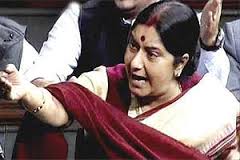
Government opted for the ordinance route Tuesday, after a bill for the same could not be passed in the monsoon session of parliament.
Leader of the opposition in Lok Sabha Sushma Swaraj tweeted: "Union Cabinet has approved ordinance on convicted MP's. We are opposed to this. We request the President not to sign this ordinance."
Information and Broadcasting Minister Manish Tewari took to Twitter and responded: "The constitutionality or otherwise of legal enactments are tested in Constitutional courts and not in the BJP's moat."
Tewari added: "Unsolicited advise is neither appreciated nor taken seriously. These are the first principles of the legal profession, advise of leader of opposition amusing/surprising."
The ordinance would save the elected leaders from disqualification but would take away their perks. The ordinance, once approved by President Pranab Mukherjee, will have to be passed by parliament during the winter session likely November-December.







Comments
Add new comment